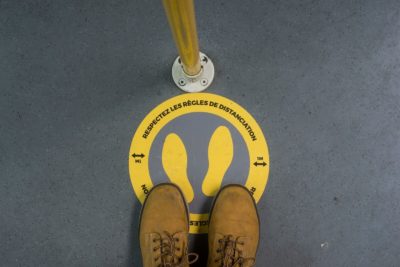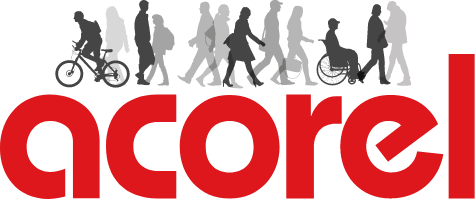To measure passenger flows, operators have until now used statistical evaluation methods such as ticketing, field surveys or mobile data. But these data do not allow them to know in real time the load rate of each vehicle (bus, tram, train, metro, etc.) or the level of frequentation of platforms.
Here are 5 advantages of knowing the number of passengers in real time
1. Improving the passenger experience

Users need to have as much information as possible about the journey they are about to make. One of the most important factors for them is the level of comfort in which they will be able to make their journey.
Taking public transport when it is crowded is rarely a pleasant thing to do, the challenge is often to find a free seat, especially in a long vehicle. Knowing the load in real time allows passengers to be informed, either on a screen or on a smartphone application, so that they can position themselves on a less crowded vehicle or section of vehicle to have a better chance of finding an available seat to make their journey enjoyable.
2. Addressing health issues
This is an important issue in these times of health crisis, when customers are particularly sensitive to the number of people using public transport. Indeed, who has never had the surprise, even after this crisis, of waiting for a bus for twenty minutes and realising that it is full?
For the operator, the health issue is all the greater as it is his duty to respect the recommendations (disinfection, distance, gauges, etc.) to restore user confidence.
With real-time information, the operator can inform the passenger of the occupancy rate (load rate) in the next bus that will stop at his preferred station or of the next tramway to suggest to the user not to hurry if he can take the next one. This avoids overcrowded vehicles and therefore helps to respect the gauges.

3. Addressing security issues

It is essential to increase transport safety in the event of an incident. For example, knowing the number of people with reduced mobility and which vehicle they are in can help the fire brigade to better manage the evacuation in the event of an accident.
Thanks to this same information, it is also possible to set up alerts if the maximum threshold is exceeded, depending on any gauges imposed.
4. Adapting your transport offer to demand
The decline in frequentation and its variability caused by health scares and the reorganisation of working time in households (teleworking, part-time work) has led to a drop in income for transport operators. A major unknown has emerged: ridership! What behaviours have or will users adopt? How do we know if a bus has exceeded its maximum capacity? Having a solution to know the occupancy rate of vehicles in real time is therefore relevant to adapt to the current situation and better manage its network.

5. Anticipate and manage concentrations of people on platforms and in stations

The problem of managing concentrations of people (crowds) on platforms and in stations has become more acute following the health crisis. It is increasingly essential to be able to retrieve passenger flow data from the ground in real time in order to
Ensure compliance with social distances and improve passenger comfort.
Link with on-board data for greater accuracy and better adaptation of the transport offer.
Knowing in real time the load rate of each vehicle (bus, tram, train, metro…) or the level of frequentation of platforms is increasingly useful. However, having such information is not easy and today, only automatic people counting solutions can provide it.
If you would like to know more, do not hesitate to visit the website or ask for a demonstration of our real-time flow analysis software.
For more informaion click here
